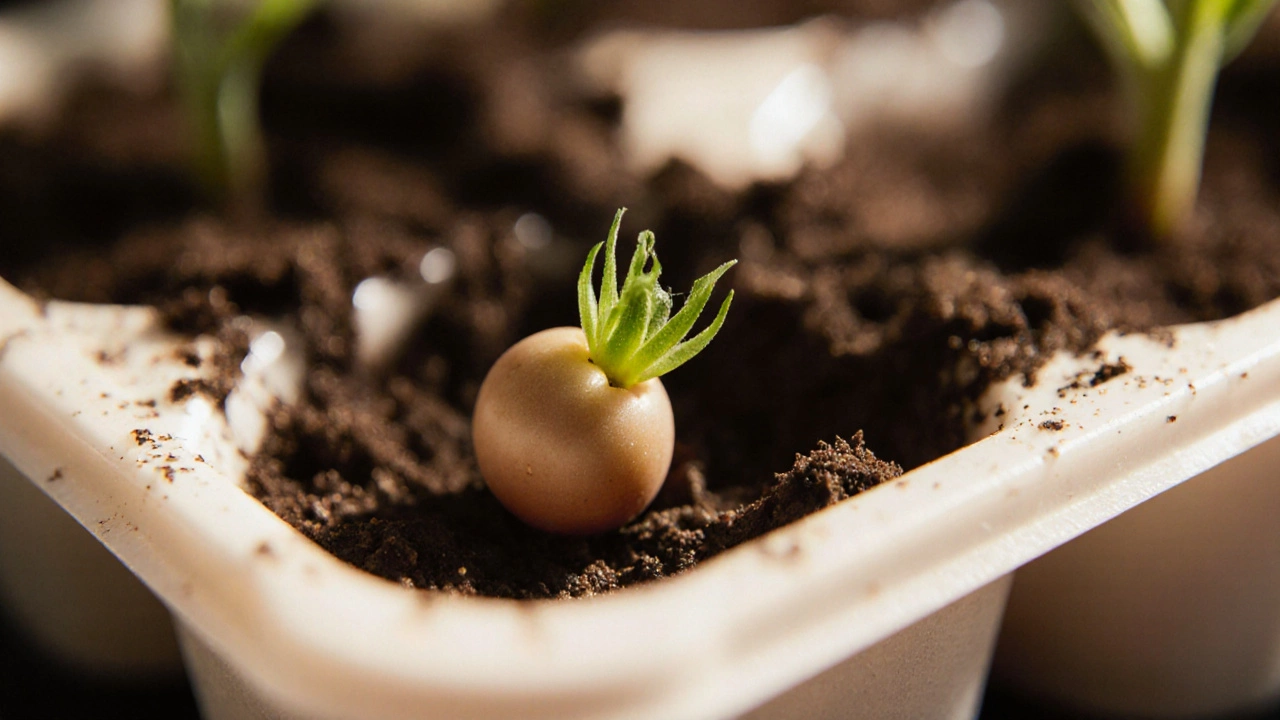Discover the exact timeline for growing tomatoes from seed to harvest, with tips for UK gardeners, variety comparisons, and a handy FAQ.
Tomato Gardening in India: Best Practices, Soil Tips, and Common Mistakes
When you grow tomato gardening, the process of cultivating tomato plants for home harvests, especially in India’s varied climates. Also known as home tomato cultivation, it’s one of the most rewarding ways to get fresh, flavorful produce right outside your door. Whether you’re using a balcony pot, a backyard bed, or a terrace container, tomatoes respond well to simple care—if you avoid the usual traps.
What makes tomato gardening work in India isn’t fancy tools or expensive fertilizers. It’s understanding your local weather, picking the right soil, and knowing when to water. Many people fail because they plant tomatoes where the sun is too harsh after noon, or they use soil that stays wet too long. In places like Delhi or Chennai, the monsoon humidity can invite fungal diseases. In Rajasthan, the heat dries out seedlings fast. The key is matching your tomato variety to your region. Cherry tomatoes do well in small pots on balconies. Big beefsteak types need deeper soil and more space. And don’t forget—tomatoes need at least six hours of direct sunlight daily. If your balcony faces north, you’re setting yourself up for disappointment.
Soil is where most tomato gardens succeed or fail. You can’t just use regular dirt from your yard. Indian garden soil is often too dense, especially in cities. That’s why adding compost or leaf mold helps. compost, organic matter broken down by microbes that enriches soil and improves drainage. Also known as black gold for gardeners, it’s the secret behind strong roots and fewer pests. Mix it in at a 1:3 ratio with your existing soil. Add a handful of perlite if your soil clumps like clay. And never skip testing pH—tomatoes like it slightly acidic, between 6.0 and 6.8. Too alkaline? Add coffee grounds or peat moss. Too acidic? A pinch of crushed eggshell helps.
Watering is another big one. Tomato plants don’t like wet feet. Drip irrigation works better than buckets because it delivers water slowly to the roots. Overwatering causes blossom end rot—those ugly black spots on the bottom of your fruit. That’s not a disease. It’s a calcium imbalance caused by inconsistent moisture. Water deeply twice a week instead of sprinkling every day. Mulch with straw or dried leaves to hold moisture and keep weeds down. And never water the leaves. Wet foliage in humid air invites blight.
Some gardeners think tomatoes need tons of fertilizer. Not true. Too much nitrogen gives you leafy plants with no fruit. Use a balanced organic feed once a month after the first flowers appear. Bone meal or ash from your fireplace gives you the phosphorus and potassium tomatoes crave. Companion planting helps too. Grow basil nearby—it repels whiteflies and makes tomatoes taste better. Marigolds keep nematodes away. Avoid planting tomatoes near corn or potatoes—they share diseases.
You’ll find posts here that cover everything from fixing clogged drip lines for tomato plants to choosing the best containers for small spaces. You’ll see how to handle pests without chemicals, how to grow tomatoes year-round in mild regions, and why some varieties thrive in South India while others die in the north. There’s no one-size-fits-all, but there are clear patterns. The best growers here don’t follow trends. They watch their plants. They notice when leaves curl, when fruit turns pale, when the soil feels dry an hour after watering. They adjust. That’s the real skill.
What you’ll find below isn’t theory. It’s what worked for real gardeners in Pune, Lucknow, Bangalore, and Coimbatore. Lessons from failed crops. Fixes that saved a season. Simple tricks that cost nothing but made all the difference. Whether you’re growing your first tomato or you’ve been at it for years, there’s something here that will help you get more fruit, with less stress.
